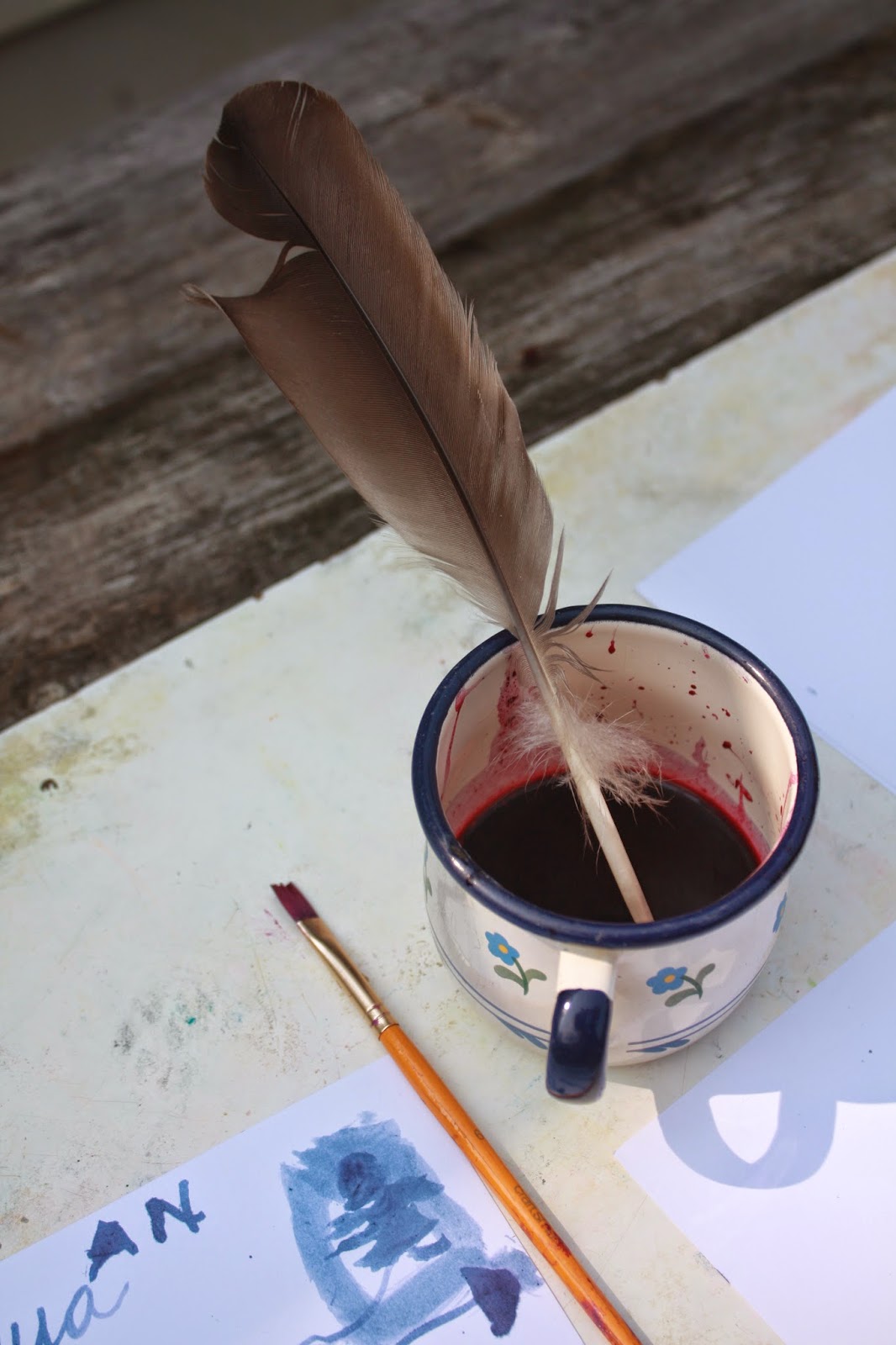Anya and I finally made time to do a project I've been looking forward to. We wet felted a flower (the intention was to make dandelions, two of them, for hair ties to end her double braids... but as they often do if you allow the space for it, our project morphed and created itself). In the end, we made a sunflower/zinnia esque flower with heart shaped leaves and a curly vine.. an imaginary flower, but a lovely one!
I didn't take as many photos as I would have liked of the process (super soapy, wet hands and the camera don't mix!) , but will attempt to provide a tutorial, of sorts.

l
We started with carded wool. Carding is basically brushing the wool so the fibers are aligned, usually to prepare for spinning. In order to felt, the fibers need to lock together, so we place thin layers of wool on top of each other, with the fibers of each layer running purpendicular to the layer beneath. For this flower, we used about a 3X3 inch piece of roving, and layered 3 layers deep. On the top (you could do all of it, but lower layers are not so visible) we added in some wisps of accent colors, in a ray pattern. If you do this, go light and wispy... it will thicken up and be more pronounce as it felts and shrinks. So, to begin, place
your 3X3 layer (ours started out quite square) on your felting surface. We used bubble wrap (bamboo sushi mats also work beautifully) on a cookie sheet and plastic tray, with a towel under the whole thing. This is a GREAT project to do OUTSIDE!
Build up a few (3 or 4) thin layers of wool, adding accents as you like. Then, SPRINKLE (we used our fingers, dipped in a bowl) of hot (as hot as you can stand, really) soapy water onto the layers of roving. If you pour the water, the fibers will get displaced. As for the soap, some prefer certain brands of dishsoap. I use whatever I have on hand. Let me know in the comments if you prefer a certain type/have had more success with one. I am learning as I go! A hefty shot of soap is necessary. We used a bit too much, and required a lot of rinsing.
 |
| my layers in the foreground, kiddo arranging her fiber in the back |
 |
| Gently sprinkling water.. then lightly pat down to flatten/soak through the whole thing |
 |
Gently felting, in the beginning. Tap with fingers and pat with whole hands, until the fibers begin to felt. All the while, sprinkling hot soapy water as needed. The heat, friction, and soap are the three elements that cause the fibers to felt, so keep that water hot, and keep adding it to the wool. I had to pour off the excess from the trays, a few times. (did I mention that this a great OUTDOOR project??) you can shape it a bit as you go, folding the edges in, even gently pulling it into more of a circular shape as it felts a bit more. Once it's really begun to felt, you can roll it up, burrito style (hit it again with hot, soapy water) , in the bubble wrap or sushi mat. Then, as the fibers are really held in place, you can go to town sqeezing, massaging, and rolling.... don't be afraid to use vigorous motion... it really helps the process. Unroll, and turn the other direction to felt in the hoizontal as well as vertical plane.

Now, the whole piece should be a bit shrunken and fairly firmly felted together. At this point, you can lay it flat on the bubble wrap, and rub intensly with your hands. The nubs on the wrap help in the felting process. I even dipped the whole thing in my hot bowl of water, wadded it up in my hands, and rolled and squeezed. When you're happy with the shape and density, rinse, lay flat to dry, and make two more rounds (don't worry if they're squarish... especially if you plan to cut petals) If you want a more rounded shape, gently stretch the edges into shape while still wet.
Making the felt for the leaves is the same process. Just make a piece big enough to accomodate the shape/number of leaves you'd like your flower to have. To make a stem/vine, pull out a long, thin piece of roving. Wet with soapy hot water, and gently squeeze down the length of it to begin felting. Once it's started to hold together, you can roll it vigorously between your palms until it's quite firm. If you want it to be curly, rinse, and wrap around a thin cylinder(we use a paint brush handle) . Holding it in place helps, as it needs to dry completely while wrapped to hold the curl. I grabbed playstand clips, because they were close by, but clothespins would be good, too.

Once dry, you can cut out your leaf shapes and cut petals. My petals came out really wonky, but the end product was still nice. Just cutting slits in a ray pattern didn't work very well... shaping petals and removing a bit of material in between was a bit better. (I hated wasting a bit of that felt, though! We saved the scraps for scrap jewelery, later.
The next step is to arrange your layers, leaves, vine/stem and stitch them together. We added a little lightly felted ball of wool to form the center of the flower.
Then, stitch to a headband, barrette, or pin, et voila! A lovely felted accessory. If anyone has questions, feel free to ask in comments.
|


































































